SEAT Leon 1P 2005-2011 Tuning
"Best Mods and Upgrades for the Leon 1P"
Let's talk about mods and tuning upgrades for the 2005-2011 Leon (1P). These are very popular cars and addressed many of the shortfalls of their predecessors. The PQ35 platform was used for cars ranging from the A3 to Q3 Touran and EOS so it was quite versatile and ensures you have plenty of mods and upgrades to choose from for your modified Leon tuning project.
I always view the SEAT brand as the young trendy arm of the VAG group. The styling and interiors are great looking and often have styling that appeals to its younger audience, but as a result, the cars can date quickly and this is a factor in their depreciation figures.
They also get slightly more powerful versions of the engines and are more tuned from the factory compared with the more sensible brands from the VAG group.
Thankfully it means you can buy a very capable VAG group car, with top spec engines for little money and you have a wide range of upgrades and mods you can buy for it so they make fantastic project cars.
List of engines & engine codes fitted to the Leon 1P (Including Cupra)
| 2010 — | 1.2 TSI | CBSZ | 77 kW (105 PS; 103hp) @5,000 rpm |
175 Nm (129 lbft) @1,550–5100 rpm |
| 2007 — | 1.4 | BXW/CGG | 63 kW (86 PS; 84hp) @5,000 rpm |
130 Nm (96 lbft) @3,600 rpm |
| 2007 — | 1.4 TSI | CAXC | 92 kW (125 PS; 123hp) @5,600 rpm |
200 Nm (148 lbft) @1,500–4,000 rpm |
| 2005 — | 1.6 | BSE/BSF/CCSA | 75 kW (102 PS; 101hp) @5,600 rpm |
148 Nm (109 lbft) @3,800 rpm |
| 2007 — | 1.8 TSI | BZB/CDAA | 118 kW (160 PS; 158hp) @4,500–6,200 rpm |
250 Nm (184 lbft) @1,500–4,500 rpm |
| 2005 – 2009 |
2.0 FSI | BLR/BLYBVY/BVZ | 110 kW (150 PS; 148hp) @6,000 rpm |
200 Nm (148 lbft) @3,500 rpm |
| 2005 – 2006 |
2.0 TFSI | BWA | 136 kW (185 PS; 182hp) @5,100–6,000 rpm |
270 Nm (199 lbft) @1,800–5,000 rpm |
| 2006 – 2009 |
2.0 TFSI (TSI) FR |
BWA | 147 kW (200 PS; 197hp) @5,100–6,000 rpm |
280 Nm (207 lbft) @1,800–5,000 rpm |
| 2009 — | 2.0 TSI FR |
CCZB/CAWB | 154 kW (209 PS; 207hp) @5,300–6,200 rpm |
280 Nm (207 lbft) @1,700–5,200 rpm |
| 2006 — | 2.0 TFSI Cupra |
BWJ | 177 kW (241 PS; 237hp) @5,700–6,300 rpm |
300 Nm (221 lbft) @2,200–5,500 rpm |
| 2009 — | 2.0 TFSI Cupra R |
CDLA | 195 kW (265 PS; 261hp) @6,000 rpm |
350 Nm (258 lbft) @2,500–5,000 rpm |
| 2008 — | 2.0 TFSI Copa Edition |
EA113 | 210 kW (286 PS; 282hp) @6,000 rpm |
360 Nm (266 lbft) @2,500 rpm |
| 2008 – 2009 |
2.0 TFSI Cupra 310 Limited Edition |
EA113 | 228 kW (310 PS; 306hp) @6,000 rpm |
425 Nm (313 lbft) @3,000–5,000 rpm |
| 2010 | 1.6 TDI DPF | CAYC | 77 kW (105 PS; 103hp) @4,400 rpm |
250 Nm (184 lbft) @1,500–2,500 rpm |
| 2007 — 2008 | 1.9 TDI | BXF | 66 kW (90 PS; 89hp) @4,000 rpm |
210 Nm (155 lbft) @1,800–2,500 rpm |
| 2005 — 2009 | 1.9 TDI | BKC/BLSBXE | 77 kW (105 PS; 103hp) @4,000 rpm |
250 Nm (184 lbft) @1,900 rpm |
| 2005 – 2007 |
2.0 TDI | AZV | 100 kW (136 PS; 134hp) @4,000 rpm |
320 Nm (236 lbft) @1,750–2,500 rpm |
| 2005 — 2008 | 2.0 TDI | BKD | 103 kW (140 PS; 138hp) @4,000 rpm |
320 Nm (236 lbft) @1,750–2,500 rpm |
| 2006 — 2008 | 2.0 TDI DPF | BMM | 103 kW (140 PS; 138hp) @4,000 rpm |
320 Nm (236 lbft) @1,750–2,500 rpm |
| 2012 — | 2.0 TDI DPF (FR Technology) |
CBDB | 103 kW (140 PS; 138hp) @4,200 rpm |
320 Nm (236 lbft) @1,750–2,500 rpm |
| 2006 – 2009 |
2.0 TDI DPF FR PD170 |
BMN | 125 kW (170 PS; 168hp) @4,200 rpm |
350 Nm (258 lbft) @1,750–2,500 rpm |
| 2009 — 2012 |
2.0 TDI DPF FR CR170 |
CEGA | 125 kW (170 PS; 168hp) @4,200 rpm |
350 Nm (258 lbft) @1,750–2,500 rpm |
| 2012 — | 2.0 TDI DPF FR+ |
CFJA | 125 kW (170 PS; 168hp) @4,200 rpm |
350 Nm (258 lbft) @1,750–2,500 rpm |

We would go for the 1.8T, the 2.0Tfsi engines and the 1.9 TDi 130 and 2.0 TDi (avoid the 104ps version unless you are desperate for economy.
Mods for the SEAT Leon 1P Engine.
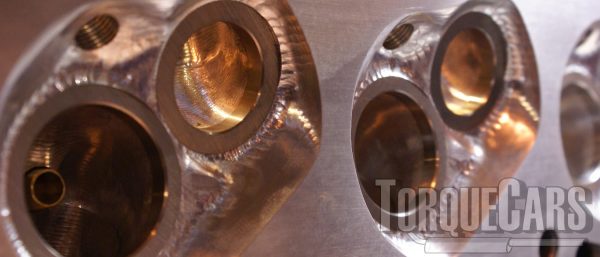
Getting the proper customized components for your car's intended use can save you time and money. The Leon is tough to drive with race spec parts since the Stage 3 motor sport mods weren't designed to work in everyday driving on the road so caution is needed when choosing upgrades.
Peak power is great, but for a daily driver, you'll need a wider power spectrum and maybe more rev range, plus the handling needs to retain some comfort as well as allowing control.
Engine swaps are excellent value improvements for small engined vehicles since the more you start with, the greater the return on investment. Smaller non-turbo engines can also be modified, but the payback is much lower.
We have the following tuning guides for the Following Audi engines.
- 1.4 1.5 TFSi tuning
- 1.4 TSi/TFSi/Twincharge tuning
- 1.8T engine Tuning
- 1.8 & 2.0 TFSi (mk1) Tuning
- 1.8 2.0 TFSi (ea888) Tuning
- 2.0 TFSi carbon issue & care guide
- 2.5tfsi tuning
- 3.0 V6 24v TFSI Tuning
- 2.8 V6 30 valve, 24 valve 3.0 V6 30v and 3.2 VR6 Tuning
- 3.6 VR6 Tuning
- 1.6 TDi tuning
- 1.9 TDi tuning
- 2.0 TDI 140-170 tuning
- 2.0 TDI tuning (EA188)
- 2.5 TDI tuning
- 2.7 & 3.0 TDI tuning
- 2.5 Tdi R5
- 3.0 Tdi EA897
The Leon 1P is a fantastic choice for families, but it's also a lot of fun to drive. The Cupra 310 displays the platform's capability and potential when tuned, and with a few simple adjustments and upgrades, you can get some impressive power figures.
Please watch our video which covers the 5 principles of tuning your Leon. Be sure to keep up with our latest YouTube content and subscribe.
Best mods for your Leon 1P
- Intake Mods and Exhaust Upgrades - NB: on their own these mods won't ADD POWER in most cases, but they can help enhance power after other mods by removing the restriction.
- Forced induction upgrades - A New Turbo is the most efficient approach to increase air supply, allowing you to burn more fuel and make more power. Although one of the most costly upgrades but provides the best gains.
- Fast road Camshafts are one of the most significant mechanical changes, but they must be setup by someone who knows what they are doing and they are not always easy to source but you might find a local firm to regrind a stock camshaft.
- Remaps - A Remapped Leon ECU provides the most power compared to cost, aftermarket ECUs, and inline Tuning boxes are all alternatives.
- Leon Suspension Upgrades - Upgrading your suspension radically improves your Leon handling Poly Bushes and Coilovers are typically fitted to achieve this
- Brake Mods - Improve your ability to stop needs to be high on your agenda.
- Internal engine mods - crank, pistons, conrods & compression ratio including balancing and blueprinting
Leon 1P Tuning Stages
Typical stage 1 mods often include: Remap, Sports exhaust, Panel air filter, Lighter flywheel, Alloy wheels, Suspension upgrade (drop ).
Typical stage 2 mods often include: high flow fuel injector, Ported and polished head, Power/Sport clutch, Fast road cam, fuel pump upgrades.
Typical stage 3 mods often include: Competition cam, Internal engine upgrades (pistons/head/valves), Adding or upgrading forced induction (turbo/supercharger), Sports gearbox, Engine balancing.
We are assuming a 1400kgs kerb weight (driver and ballast), & Manual transmission for the performance tuning figures in the table below
| Base power | Quarter Mile | Tuned to | Kerb Weight | Quarter Mile |
| 115hp | 18.27 | 120hp | 1400kg | 18.02 |
| 150hp | 16.77 | 170hp | 1400kg | 16.10 |
| 185hp | 15.67 | 225hp | 1400kg | 14.71 |
| 640hp | 1400kg | 10.98 | ||
| 550hp | 1200kg | 10.97 |
Leon 8J Suspension Modifications
The first point of improvement for Leon 1P owners is basic handling adjustments. Drop the vehicle by around 35mm and update the dampers; larger drops will almost invariably need further changes to avoid rubbing tires. The Cupra & FR suspension is already around 15mm lower than the normal suspension, and although it is better, it feels a little crashy and rough.
Cornering speed is crucial in racing, and suspension plays a massive part in this. Because the average race circuit is forgiving and well-maintained, you may use more aggressive suspension settings and lower the vehicle to improve aerodynamics and reduce the center of gravity but on the road you need something a little softer and that permits more suspension travel.
The rubber suspension bushings of the Leon 1P will wear with time, resulting in squeaks, rattles, and bumps, as well as the suspension not being as tight as it should be.
So the first step to fix the fundamental suspension setup is actually the bushings, and although replacing with polyurethane bushings is a good idea, don't go crazy - Seat chose rubber for a reason: it works well at softening road vibrations but you can now get softer grade Poly bushes which work really well.
So, what variables and considerations should you keep in mind when setting up and selecting a suspension for your everyday driver?
The suspension maintains the tires' angle on the road for optimal contact area. To reduce body roll to a minimum, the car's center of gravity must be as low as possible. Torquecars recommends a 35mm drop on most Leon 1Ps and a 20mm drop for FR and Cupra models as these already have lowered suspension.
Leon Suspension Myths and Common Mistakes
The majority of kits we see for the Leon are quite generic, and merchants often state that they may be used on any and all vehicles, including diesel and gasoline types. A one-size-fits-all suspension, regardless of engine, wheel, or Leon 1P weight, is a myth (the diesel engines are pretty heavy) but a compromise is often better than the OEM setup.
Changing the ride height has an impact on how the suspension travels under load, which may lead to premature tyre wear.
It's also a poor idea to buy lowering springs and use the OEM-recommended basic dampers, or to upgrade dampers and use standard springs. The complete suspension system must be treated as a whole, and the entire shock components must be replaced.
NEVER CUT YOUR Leon's SPRINGS! If they are cut, they may shatter or break unexpectedly. My suspension shattered three times on me to show how fragile particular batches were; the low ride height looked great, but the handling was terrible, even though the broken springs were 1 inch lower! (If one of the springs fails, I suggest replacing them all as it will just be a matter of time!)
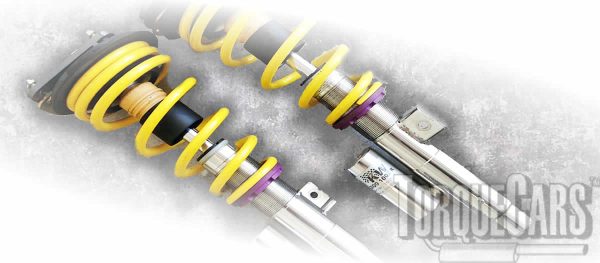
It is good to have a suspension package that can be readily adjusted to meet your driving style on the automobile. Coilovers are useful since they may be customized to your driving style. Excellent brands for the Seat Leon 1P include KW, Koni, Bilstein Eibach, and Bilstein. See the shop link in our menu at the top to find suitable kits for your car.
Brake Upgrades for the Leon 1P
Larger brake discs may spring to mind first, but don't forget about brake pads. They have a higher influence on your Leon 's stopping power than the discs, and worn pads may completely destroy your Leon 1P's braking systems effectiveness.
Brakes are essential because going fast necessitates improving the ability to stop quickly. A brake converts kinetic energy into heat by pushing a friction pad on the disc. The car's forward velocity is slowed when the heat is removed. Brake heat accumulation is visible in night time motorsports, as the brakes glow with heat after lengthy usage, demonstrating how much heat we're dealing with.
When you press the brake pedal, the force is sent to the servo to amplify your foot pressure, giving you a progressive sensation, and this increased pressure is delivered to the friction pads through a brake fluid-filled tube (liquids do not compress like air so efficiently transmit the braking pressure) unless it has absorbed air or water.
As the braking fluid comes into contact with the hot brake pad end, it may get rather hot, placing extra demands on it; thus, use high-quality fluid and braided hoses and change it in accordance with your manufacturers recommendations.
Brake fluids are hygroscopic (attract water particles) and may boil at high temperatures; air bubbles in the brake fluid create a spongy feeling at best and can completely disable the brake at worst, which is why it should be changed on a regular basis.
(For further information on this topic, see the Brake Fade article I wrote.
Leon 1P Brake Disks
Because the pad atop the discs generations friction so the discs can absorb the braking heat, an effective disc, is essentail.
The middle channel of the vented disc increases the surface-to-air ratio, resulting in better and quicker cooling.
Drilled discs help keep the pads "clean and sharp" by boosting the air ratio and decreasing gas collection between the pad and the disc. Larger discs provide additional cooling, although they may require the use of a different alloy wheel.
The components of a pad High-friction brake pads, on the other hand, are absolutely necessary, despite the noise and dust they generate.
Racing brake pads are constructed of a high-friction compound that performs best at higher temperatures but may be noisy and ineffectual at lower temperatures.
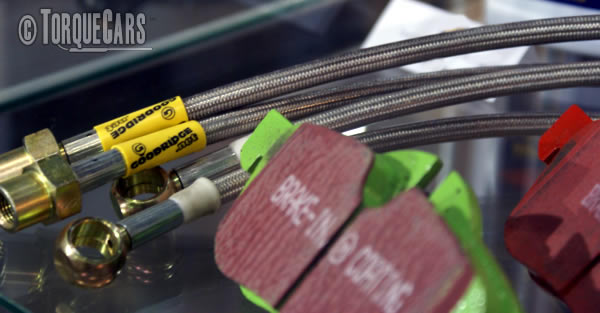
Race grade brake pads are unsuitable for road usage where braking is usually done on cold pads or in short bursts since they only engage when very hot.
Fast road pads from Pagid and Black Diamond provide a fantastic balance of braking performance and wear - I've used both on my Leon! Our "store" link at the top should help you source suitable replacements and pad upgrades.
Although driving habits do affect pad and disc wear, certain performance brake pads produce practically no brake dust and last significantly longer than the standard pads I was using. When the ABS senses a lockout, the brake is removed until the wheel rotates again.
If you are not a technically inclined driver, Torquecars recommends leaving brake repair to the pros.
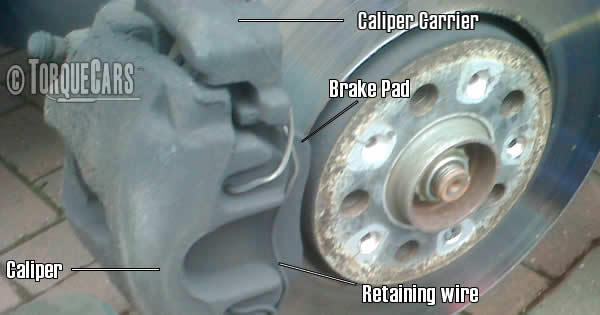
Upgrade Mods for your braking system.
Because a bigger disc has greater friction and disperses more heat, you will notice immediate results.
In the VAG group's components bin, you may find low-cost upgrading options, so look for Audi, SEAT, Skoda and VW options. The 1.6 will almost certainly have the smaller hubs carrying a 256 or 288mm disc but please get yours measured before buying an upgrade, the larger hubs can take +330mm discs easily and you probably don't want to end up swapping hubs. Both the 2.8 Golf and the R32 have 312mm and 334mm wheelbases, respectively, and are excellent upgrades for your Leon .
If you have a basic spec Leon with tiny discs, you may get brake discs and servos from a performance model in the same family from your local parts reclaimers and breakers yard quickly and cheaply. This is often far less costly than an excessively big brake converter kit.
Because most VAG Group hubs are interchangeable, brakes from Seat, Seat, Porsche, Skoda, and Seat are interchangeable.
Remapping the Leon 1P.
What is it about OEM maps that makes it so easy to improve them? Some tweaking with local fuel emission regulations and temperatures is generally necessary to establish a single configuration for everyone. OEM timing maps accommodate for temperature differences, slight mistakes, and inclement weather. It is fairly common for nations to have different CO2, HC, and NOx emission objectives and rather than have separate maps for each region, generally one map is devised to suit all areas.
Remaps are also used by manufacturers to increase engine power in order to reduce insurance costs and improve fuel efficiency so they can offer a budget eco model alongside a performance model and often it's just the map that differentiates them.
Furthermore, since the typical TorqueCars reader will be upgrading components, a tune/remap makes sense and should be performed after your other modifications to fully maximize your gains.
Remaps are available for all current SEAT turbocharged engines, providing around 20-30 percent greater power. TorqueCars highly recommends that turbocharged automobiles be tuned/remapped and diesels generally give more economy and greater power.
What drawbacks are there from engine tuning/remapping your Leon 1P?
You should service your Leon more often, maybe half of the scheduled frequency. A map tailored for high octane gasoline will need you to repair components that fail due to the extra effort they are now performing. Power increases the load on components and this stress can lead to issues if you don't keep on top of routine maintenance.
Months after a remap, the weak areas of an engine reappear. Refer to our engine tuning/remapping instructions if you're having trouble.
Typically, a tune/remap will uncover turbocharger and clutch difficulties.
Turbos may also fail, necessitating the replacement of critical components such as pistons and bearings. What about tunes or remaps in the NASP? A tune/remap will only add a few BHP if you don't have a turbo (10 percent is typical).
Choosing a Good Leon Mapper
Remaps are often used to create boost at lower rpm, forcing the turbo to spin quicker and hotter. If you don't allow the oil in the turbo cool, it may deteriorate, necessitating a costly turbo repair. A turbo timer will also help to keep the engine cooling down after a spirited drive, and is recommended if your map keeps the turbo spooling at the low end of your rpm range.
Be wary of statements about peak power. It should be noted that certain tuners have been known to induce a power blip or spike in order to draw attention and capture headline power statistics.
Consider the graph below as an example.
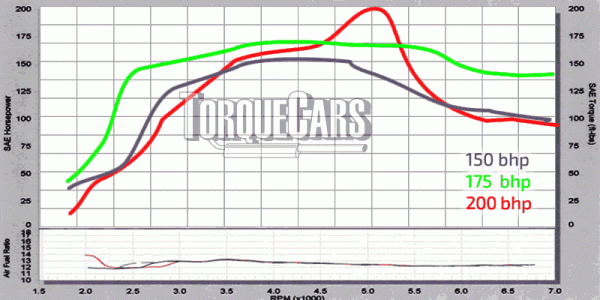
Instead of looking at headline power gains, focus on the whole torque curve from mid-to-high RPM.
The green trace, indicates a consistent gain in power over the RPM range, while the red plot shows a decrease in most areas apart from one notable blip to 200hp!
On a map then, I want to see a nice smooth torque climb, like the green line shown above, with no dramatic dips or troughs.
Turbo modifications and upgrades for your Leon 1P
Larger turbochargers create greater power but also wear down the engine and generate more heat. In a petrol engine, a turbocharger may operate between 1100°C and 100,000-150,000rpm.
With some turbo systems and subsequent models, these speeds may be doubled. Lubrication, cooling, and balancing are all required at high speeds. The three main things that may go wrong with it are oil seal failure, obstruction, and bearing wear.
You have two options for increasing your Leons turbo capacity.
- A hybrid turbocharger design (based on your OEM casing but with internals from another turbo. )
- A different turbo replacement entails increasing the turbo size, which involves the installation of new pipes as well as more labor.
Despite the fact that most hybrid turbos operate well on standard maps at lower boost levels, you should still tune/remap it. This first option simply replaces the original while reaping the additional benefits of engine tuning/remapping giving more headroom. In addition, a hybrid turbo will have better bearings, better balance, and stronger seals. Reduced rotations per minute increase reliability but will decrease power.
When choosing a turbo upgrade for your Leon , consider the shape of the air intake aperture, the compressor wheel, and the turbine profile. Depending on your demands and where you need the power in your RPM range, they may spin faster, compress more air, or boost at higher or lower RPMs. The torque curve is frequently smoother and lag is decreased with a smaller turbo.
For further information, see our guide Turbochargers from the VAG
How to Choose the Best Leon Turbo Upgrades
Because there are so many fake and low-quality turbo units on the market, it's critical to thoroughly research your sources to determine which are trustworthy.
We promise that if you install a low-cost turbo upgrade instead of a high-quality turbocharger, you will have to repeat the procedure in six months due to premature failure. Many reconditioned turbos that are sold are just cleaned, with no parts replaced or even checked.
We also consider the turbo's power restrictions, which might be exceeded at the expense of the turbo's lifespan.
You'll frequently hear a whining or siren sound before the turbo fails, followed by smoke. It is now time to begin searching for a new one. A failed turbo may cause significant damage if the compressor fails and is pulled into the engine.
When replacing the turbocharger on a VAG group vehicle to a different model, the following procedures must be followed:
- Worn-out/fouled fuel injectors must be replaced
- Increasing the diameter of the exhaust pipe
- It's probable that you'll need to replace your fuel pump.
- Replacing the boost controller
- Increasing the intake cooling system's efficiency (intercoolers)
- The waste gate will need to be replaced.
- Less restrictive catalytic converters
- Restricted exhaust mufflers must be removed and replaced.
- If there is a restriction, the intakes may need to be changed as well.
The following are the distinctions between K03, K03s, and K04 turbos:
The K03 turbo was manufactured from 1996 to 2000 before being superseded by the K03s turbo. However, depending on the model version and country of origin, it was fitted in vehicles on either side of these years.
The 1.8T AGU engines were outfitted with K03 turbochargers. These engines come fitted with a mass air flow sensor, a cable-operated throttle, and smaller injectors.
K03s turbos are used on AUM engines, for example, and come with MAF and MAP sensors. The improved drive-by-wire throttle on these engines improves both fuel economy and performance. Two of the most well-known manufacturers of these turbochargers K03, K03s, and K04s are Stigan and BorgWarner.
Turbos were available in two sizes: the K03 and K03s, which were both smaller, and the K04. The K04 produces more power, however, it requires much more area to install than the K04.
The KO3 vs KO3s.
The most major difference between turbos is the number of blades. The K03 has eleven blades, however, the K03s only has eight.
While the footprints of the turbos are the same, the actuator that opens the turbine bypass valve varies significantly, often between a 65N and an 85N, with some versions having a two-port actuator.
Because of the increased boost pressure, 180-horsepower engines often use higher-quality actuators with stronger opening force.
Increased compressor size on the intake side of a hybrid turbo often results in increased power, and many hybrid manufacturers adopt this strategy.
The power indicated in the OEM map for the original K03 is often the absolute minimum, which implies that with the correct modifications and additions, it might comfortably reach 190 horsepower.
The turbo's lifetime, on the other hand, will be decreased as you push it harder and fail to stick closely to the safe limits.
The output of the K03s is greater than that of its older sister, the K03. The safest power output for K03s is 215 bhp; anything over that puts the turbo's life in jeopardy. (Some users have reported generating up to 250 horsepower out of this turbo, indicating that there is room for development, but anticipate a shorter turbo lifetime!) It is all fun and games until something blows up!
K03s provide at least a 25% improvement in power headroom over K03, with the possibility for considerably more if you are prepared to sacrifice turbo life or do more maintenance.
When the K03(S) is compared to the K04,
The K04 has a major advantage. The K04 is substantially larger in flow rates compared to the K03 and K03s and produces significantly more power at the high end, (with a little more lag at the bottom, but you'll not notice this).
The K04's performance can be raised to about 350 bhp with the correct hardware, but the stock KO4's safe limit is 220 horsepower.
Safe limits when Tuning the K0 series of Turbos
Turbo limits - safe should retain factory reliability and longevity, the Max however is pushing to the limits and will certainly shorten the turbos lifespan.
| Turbo | Safe Max | Maximum |
| K03 | 190hp | 220hp |
| K03s | 215hp | 250hp |
| K04 | 220hp | 350hp |
However, bear in mind that inline and transverse mounted engines have distinct turbo designs, so don't mix them up:
Improvements to the Leon Diesel Turbo.
The excellent BORGWARNER BV40 VNT was used on the 2.0 TDi until 2003, and hybrid upgrades are plentiful. Adding a modern (Garrett GTC14V) 170 turbo to your diesel Leon Tuning project will offer you some literal breathing space and give you more potential for power.
For in depth Leon Diesel Turbo upgrades see our 2.0 TDi page has further information on the turbo diesel engine upgrades.
Later 2010 2.o TDI140 and 170hp models had different turbos and I like the Borgwarner BV43, therefore swapping in a newer (Garrett GTC14V) 170 turbo will provide you lots more potential in your diesel Leon Tuning effort and your main concern will be traction rather than power!
Leon 1P lighter flywheel
The flywheel makes the car more resistant to variations in engine speed, which is great for cruising but horrible when you need the engine rpms to react rapidly.
A lighter wheel exerts less strain on the engine and enables it to rev more freely, resulting in increased power response. The rpm of a race-tuned engine are substantially greater than those of a regular engine. A lighter flywheel lowers engine momentum, also known as inertial spin, which is visible on slopes and hills where the vehicle would bog down.
There are many flywheel weights available for optimal torque distribution and free revving, allowing you to fine-tune the benefits. You don't want to go too light in a street car since it will hamper your tick over. You may discuss your application with other TorqueCars users in our vehicle forums.
You must replace both the clutch and the flywheel otherwise you'll be paying out to replace the other at a later date, and labor involved is similar.
Certain variants had a dual mass flywheel with a spring connecting two distinct flywheel surfaces. The spring dampens rotational acceleration and deceleration, which is particularly useful in diesel engines. WE DO NOT RECOMMEND CONVERTING THESE TO SINGLE MASS FLYWHEELS.
They also lessen the likelihood of a reversal in four-cylinder engines. Some of our members are replacing DMFs with solid, lighter flywheels, but we suggest reading our DMF to SMF conversion article first.
SEAT Leon 1P Intake Mods
We'll now look at the intake and exhaust systems to ensure adequate engine flow. A full induction package produces the greatest power improvements. We recommend using a panel air filter instead on tiny engines since you will lose low-down power.
Increased valve size in the Leon 1P engine heads, as well as port work and head flow, will boost torque while also allowing you to improve torque gains on other tuning items.
Matching the air intake port to the intake manifold will not help much unless there is a step obstructing airflow into the engine.
Extending the port size isn't always beneficial, and it's only necessary in highly tuned engines when the port size has become a bottleneck.
Using slightly narrower channels with fewer bends or angles may enhance flow rates significantly.
This will limit power; the objective should be to have both port apertures approximately the same size to minimize turbulence on the downflow side; this is why many current intakes are now constructed of lightweight moulded plastic that can be shaped to a very exact shape.
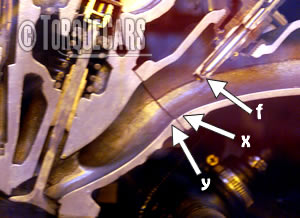 The purpose of this image is to demonstrate that you create a smooth link between the intake manifold (x) and the engine port (y) as shown in a highly tuned rally car engine.
The purpose of this image is to demonstrate that you create a smooth link between the intake manifold (x) and the engine port (y) as shown in a highly tuned rally car engine.
The fuel injector (f), which has a direct connection to the valves, sprays gasoline into the intake manifold (a direct injection engine clearly does not).
The intake angle has also been lowered, allowing air to enter the engine practically straight. The goal is to smooth out the air flow and reduce bends, which isn't always doable on all engines.
Leon 1P Exhaust mods
Don't aim for the largest exhaust you can get; 1.5 to 2.5 inches is generally the sweet spot for power improvements. The stock exhaust fitted generally flow quite well, even with a few upgrades and mods.
With updated injectors, you'll be able to provide adequate fuel to the engine. More power demands more fuel, which typically involves replacing the OEM injectors.

Upgrade the fuel pump to meet the increased fuel requirements of your tuned Leons upgraded injectors.
Alloy wheels for the Seat Leon 1P
Alloy wheels aid in the cooling of brakes and are usually lighter than steel wheels. It's worth mentioning that, although massive alloy wheels look beautiful on the Leon 1P, they seriously impede from performance.
Because of the difference in effective final drive ratio, the higher you go, the slower your peak speed will be. Maintain the overall rolling diameter of the wheel as specified by the manufacturer.
In any case, we don't advocate going any higher than 18 inches. Some of our members have installed 19- and 20-inch wheels, mostly to accommodate a Porsche brake upgrade, but as a result of the higher rim size, they have all had tram lining and other concerns. Alloy wheels aid in the cooling of brakes and are usually lighter than steel wheels. It's worth mentioning that, although they look great on the Leon 1P, they aren't for everyone. Your performance will suffer as a result of large alloy wheels and personally I find that 17's are the sweet spot when it comes to improving the handling on the Leon 1P.
Because of the difference in effective final drive ratio, the higher you go, the slower your peak speed will be. Maintain the overall rolling diameter of the wheel as specified by the manufacturer.
In any case, we don't advocate going any higher than 18 inches. Some of our members have installed 19- and 20-inch wheels, mostly to accommodate a Porsche brake upgrade, but as a result of the higher rim size, they have all had tram lining and other concerns.
Leon 1P Common Problems
There are a few problems and issues to look out for on other popular vag group engines, but I've split these off into other articles.
- 2.0 TFSi carbon buildup issues - direct injection engines require an intake clean.
- 2.0 TFSi problems - N75 and N249, high oil consumption, Cam Follower wear, Water Pump failure, and Turbo issues
- 2.0 TDi problems - Flywheel, Oil pump, Lumpy Idling
- 1.8T Problems - Diagnosing the common faults and issues
Please join us in our forum to discuss the Leon 1P options in more detail with our Leon 8J owners. It would also be worth reading our Leon 8J tuning articles to get a full grasp of the pros and cons of each type of modification.
Please Check out my YouTube channel, we're regularly adding new content...
PLEASE HELP: I NEED YOUR DONATIONS TO COVER THE COSTS OF RUNNING THIS SITE AND KEEP IT RUNNING. I do not charge you to access this website and it saves most TorqueCars readers $100's each year - but we are NON PROFIT and not even covering our costs. To keep us running PLEASE Donate here
If you liked this page please share it with your friends, drop a link to it in your favourite forum or use the bookmarking options to save it to your social media profile.
Feedback - What do You Think?
Please use our forums if you wish to ask a tuning question, and please note we do not sell parts or services, we are just an online magazine.
Help us improve, leave a suggestion or tip
Please watch this video and subscribe to my YouTube channel.

 Click to accept YouTube Cookies & Play.
Click to accept YouTube Cookies & Play.